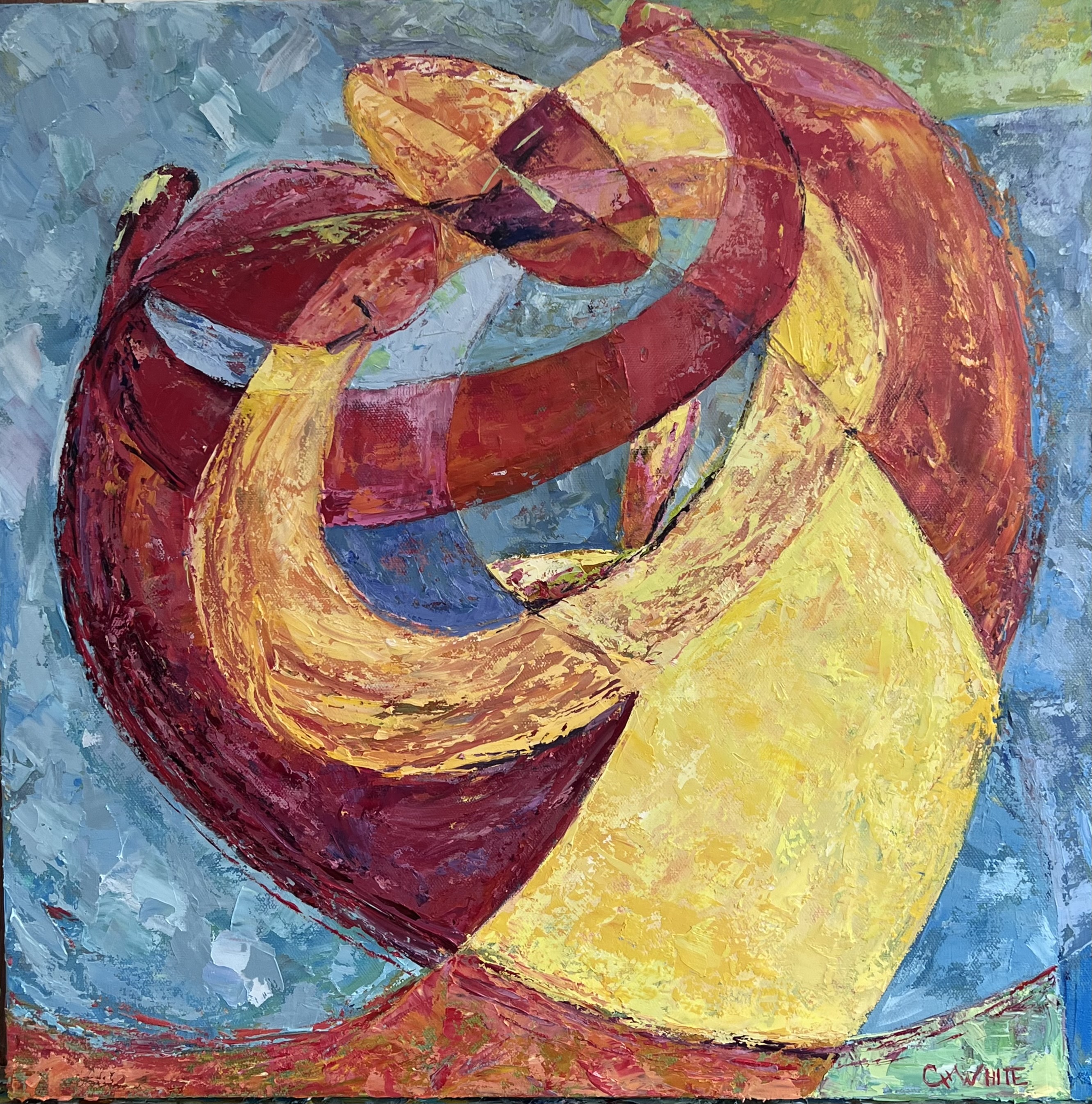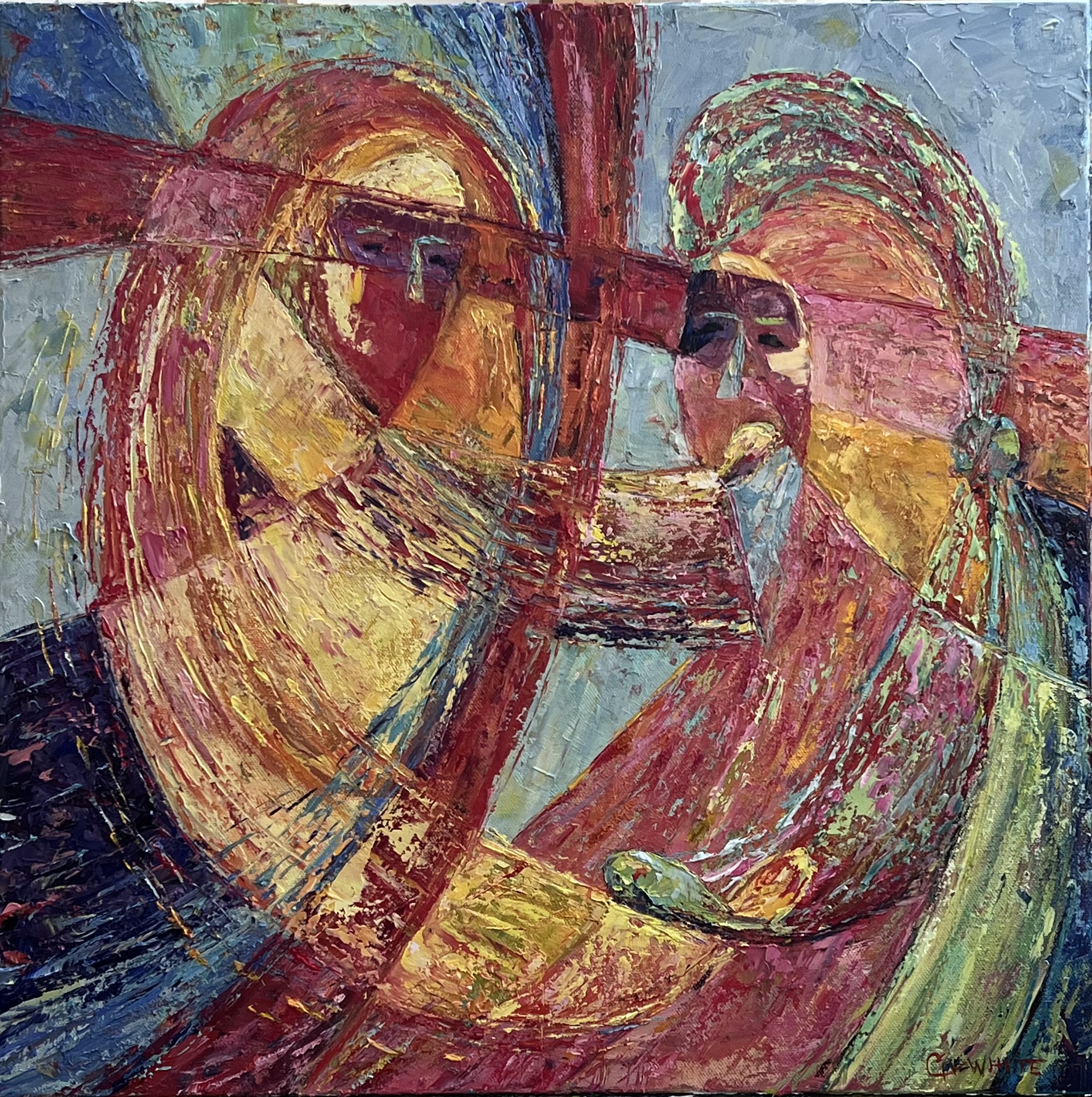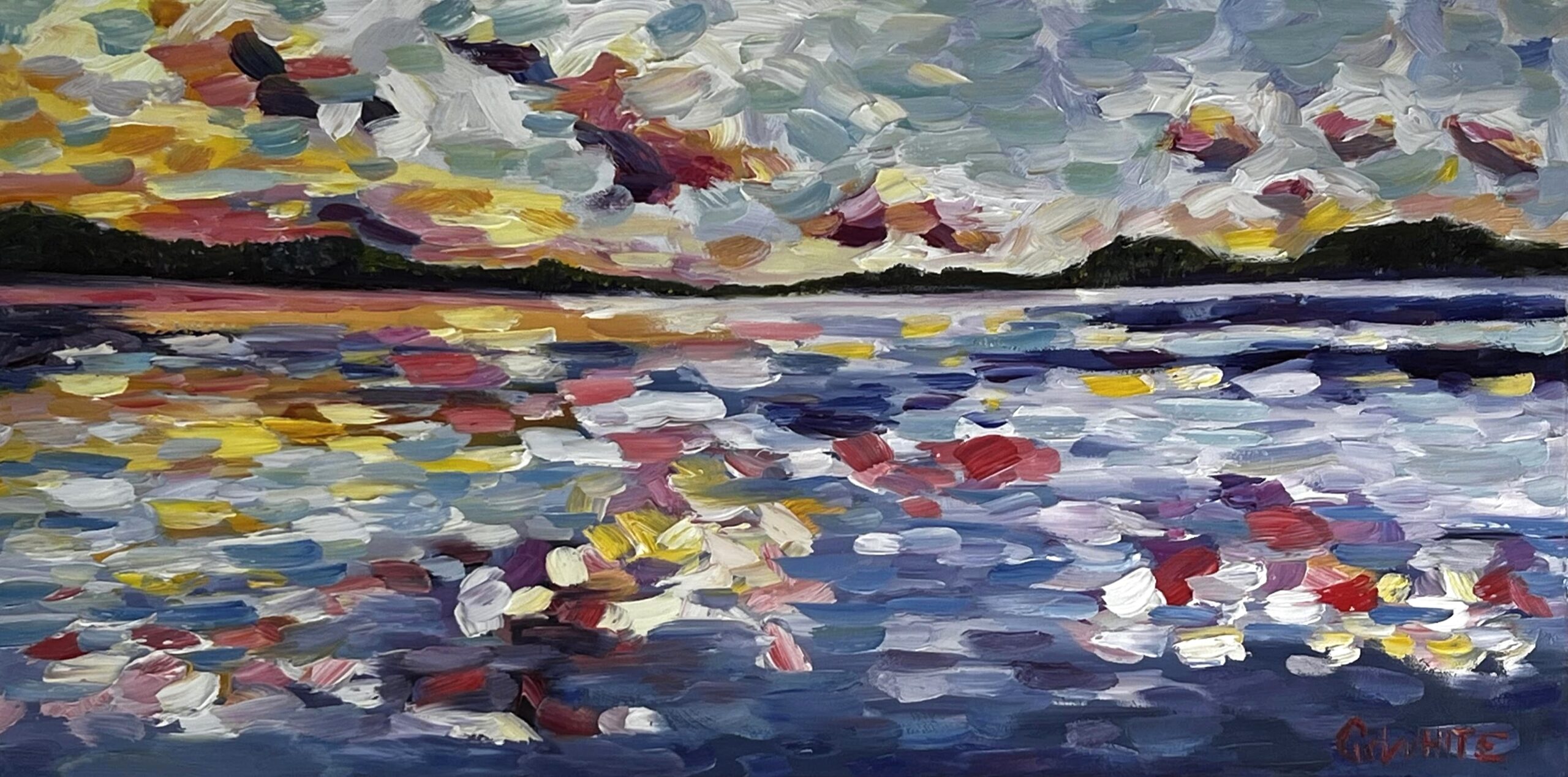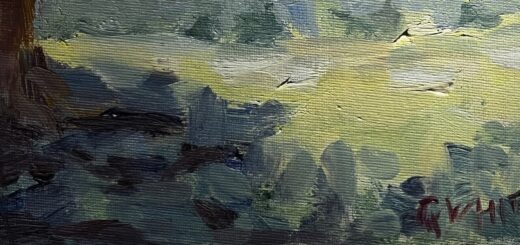How do you paint forgiveness?

How do you paint forgiveness? It’s easier to show you than to tell you. These two new oil paintings inspired by extended and received mercy and love modeled in the Bible are my attempt to paint forgiveness.
What is forgiveness?
When I began the process of painting forgiveness, the foundation of forgiveness taught in Scripture was key. The Bible reveals that God’s idea of forgiveness is unselfish love. 1 Corinthians 13:5 describes this kind of love with the language, “it keeps no record of wrongs.” If we endeavor to practice this kind of forgiveness with others, it means letting go of our resentment and giving up any claim to be compensated for the hurt or loss we have suffered. As I wondered how to paint this idea, two stories from the Bible stood out as beacons modeling this type of love. The story of the Forgiving Father is also frequently referred to as the story of the Prodigal Son and the account of Jesus forgiving the woman who was accused of adultery.
Forgiveness modeled
In both of these examples, forgiveness was extended when it was not earned or deserved. With the forgiving father, the son repented of how he had wronged his father and returned home in humility and brokenness. With the woman caught in adultery, Jesus forgives her and then tells her, to go and sin no more. The two recipients of the grace and mercy in these stories received in very different ways, but in both examples, a turning from an old pattern of life toward a new one was involved. While engaging in the process of painting these, I found myself wanting to capture both the selfless action and posture of the forgivers, the Father and Jesus, as well as the humble and repentant attitudes of the receivers. These two stories ultimately point us to God and the unconditional love He extended to humanity in forgiving us for our rebellion and rejection of Him. There is a great video from the Bible Project that can explain that forgiveness much better than I can here. As I expressed these two forgiveness models in my art process, my prayer was that I would also embody and embrace this practice in my life as I encounter others, and thus, creating the paintings became a practice of worship.
The Forgiving Father, also frequently called the story of the Prodigal Son

This painting is inspired by the moment when the father in Luke 15:11-32 finally gets to embrace his son who had been lost. The figure of the father is filled with gold and orange light and his bowing posture shows that he is bringing his body down to the son’s level to offer forgiveness, love, and comfort. His arms are a never-ending circle of unconditional love. The figure of the son is mostly red, covered by the blood of Christ, and bowed in repentance and recognition that the grace he is receiving is completely undeserved. Their bodies form the shape of a heart reminding us that we too are caught up in the never-ending unconditional love embrace of God.
The Woman Publically Accused of Adultery.

This is from the account in John 8:1-11 when a woman is publicly accused of adultery and Jesus extends compassion and forgiveness to her. Between the two figures of Jesus on the left and the woman on the right is the cross reminding us that this same forgiveness and compassion is available to us because he sacrificed his body for us on the cross. The figures are connected through the cross, just as we are connected to God and each other through the cross as the body of Christ.
These two paintings and one more are included in the Body / Image Art Exhibit at The Village Church Denton now through Easter 2024.



